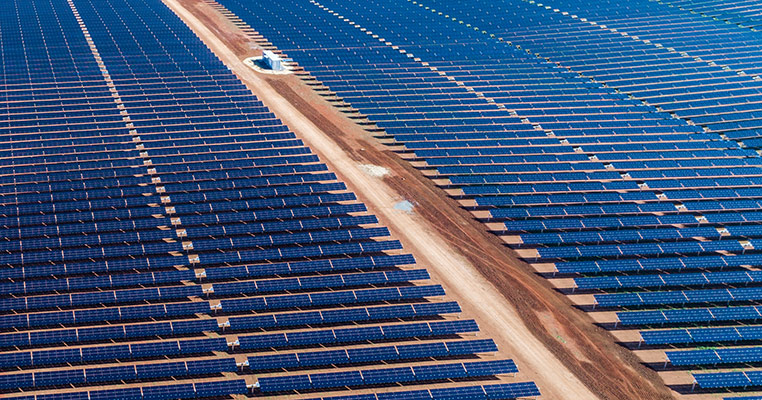Infrastructure Australia, the Australian government’s independent infrastructure adviser, has formally recognized the world’s biggest solar and storage project – a planned 13 GW solar farm and 27 GWh battery storage facility.
The proposed project, which will generate, store and transmit solar energy to domestic and international markets, was included on Infrastructure Australia’s annual Infrastructure Priority Initiative List last week. In announcing the project’s inclusion, Infrastructure Australia acknowledged the potential for large-scale solar generation to transform the energy landscape in northern Australia. It said the Northern Territory has a distinct advantage when it comes to utility-scale renewable energy projects, noting the territory’s large land mass, solar resource, and proximity to other Indo-Pacific energy markets.
“There is an opportunity to harness this advantage by developing large-scale, dispatchable renewable energy generation in the Northern Territory, with transmission infrastructure to supply domestic and export markets,” Infrastructure Australia said.
The proposed Australia-ASEAN Power Link includes a 13 GW solar farm to be developed on a 12,000-hectare site at Powell Creek, near Elliott in the Northern Territory. If built, it will be coupled with 27 GWh of battery storage. The project is expected to supply power to the Darwin region and to Singapore via a 4,500 km high-voltage direct-current transmission network, including a 750-kilometer overhead transmission line, from the solar farm to Darwin and a 3,800-km submarine cable from Darwin to Singapore, via Indonesia.
Sun Cable said it was “delighted” the project has been added to the priority list and said its inclusion is consistent with the 2019 Australian Infrastructure Audit, which found Australia could develop new industries based on renewable energy, including large-scale solar and wind.
“There is an opportunity to harness abundant renewable energy resources for domestic electricity supply, growing Australia’s capacity to contribute to the whole global value chain of renewable electricity, including zero emissions manufacturing, as well as creating an intercontinental renewable electricity transmission export industry for Australia,” said Sun Cable CEO David Griffin. “Sun Cable’s vision is to create a world-class renewable electricity grid across the Indo-Pacific region, which will decouple economic growth from global greenhouse gas emissions.”
Northern Territory Chief Minister Michael Gunner welcomed the inclusion of large-scale solar generation on the priority project list. “(It) will make the territory a renewable energy superpower,” Gunner said. “Renewable energy from Sun Cable delivered at scale into Darwin will be the catalyst for growth in existing and emerging industries, including low-emissions manufacturing and zero-emissions data centres and digital services.”
The announcement comes just weeks after Sun Cable signed a project development agreement (PDA) with the Northern Territory government. The Australia-ASEAN Power Link has also been afforded Major Project Status by the Australian and Northern Territory governments.
Sun Cable said it will now pursue the next stage of the process with Infrastructure Australia. The Singapore-based company said it is working on a Territory Benefits Plan and predicted that the 70-year project would create about 1,500 jobs during construction and 350 during operations. It said financial close is expected in late 2023, with the first electricity to Darwin by 2026 and Singapore from 2027.
The Sun Cable solar project is one of 44 initiatives included on Infrastructure Australia’s 2021 Infrastructure Priority List. The provision of dispatchable energy storage for firming capacity in the National Electricity Market (NEM) has been included among the High Priority Initiatives. Noting the transition to a new electricity mix in the grid, Infrastructure Australia said the NEM will require significant investments in dispatchable energy storage to support growing renewable energy generation and the future retirement of coal-fired generators.
This content is protected by copyright and may not be reused. If you want to cooperate with us and would like to reuse some of our content, please contact: editors@pv-magazine.com.




What we should be doing now is developing Darwin into a major port then developing solar powered fast rail to all states from there. That way many supply ships wouldn’t need to make the long trip to ports around Australia. By rail your able to deliver faster using very cheap solar. Times are cut and there is less pollution by shipping to our marine environment
Shipping is by far the least costly or polluting per kg/delivered.
Building such an expansive transport system will have a massive carbon footprint, and we already have ships. We (and the sea) would further benefit from economy retrofits on ships, and eventually shipping with electric prime movers (instead of burning dinosaurs 😉 )